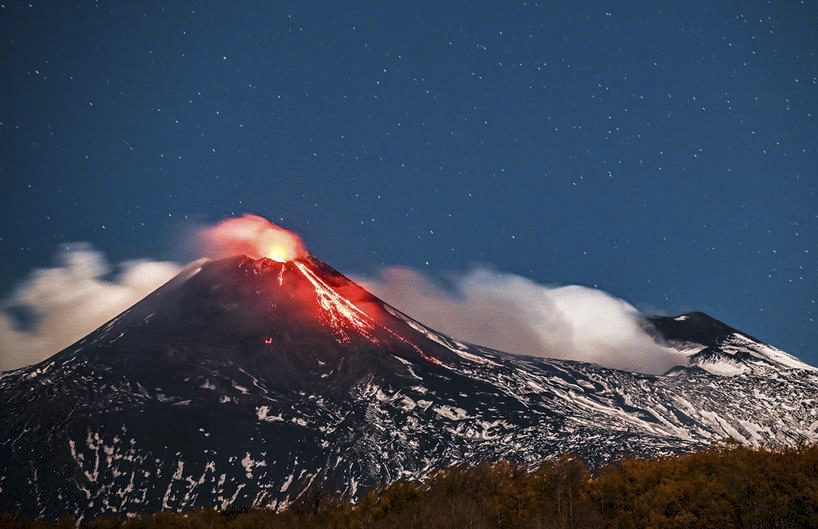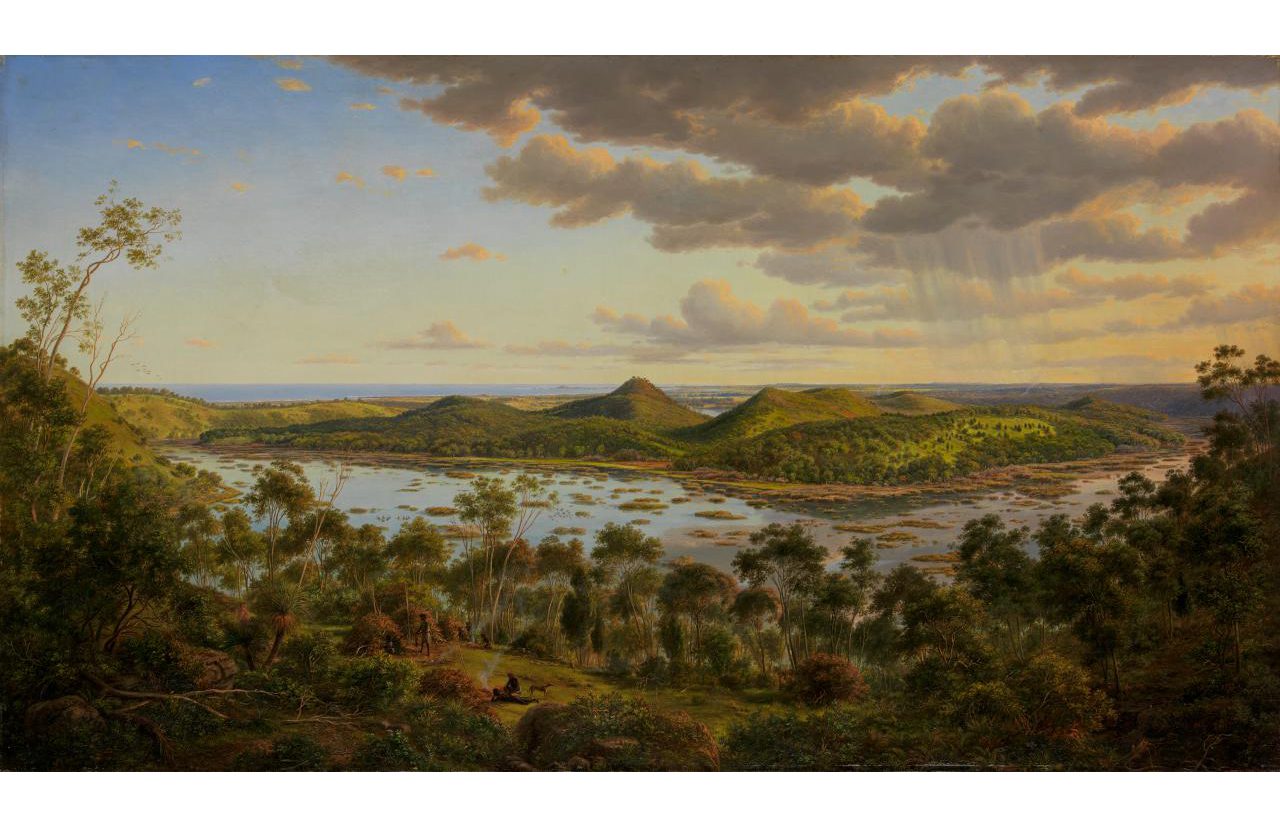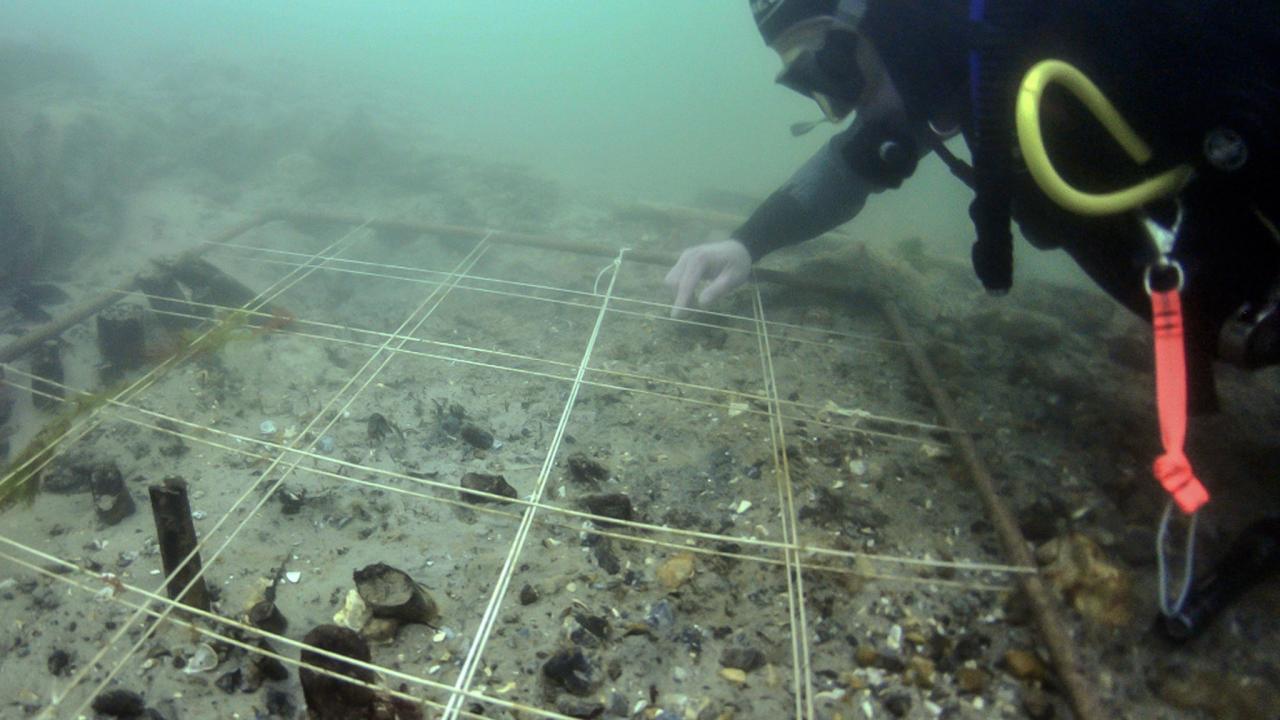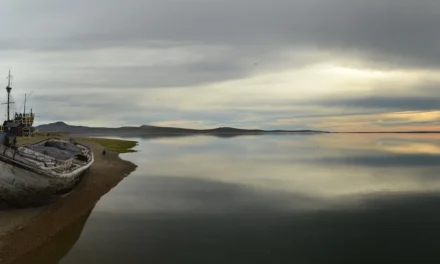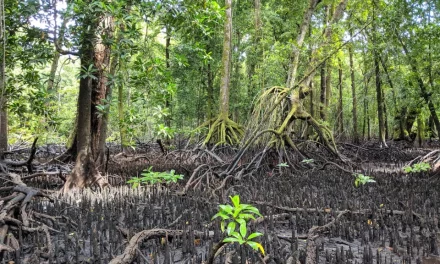Reading time: 13 minutes
On 14 April 2010 the Icelandic volcano Eyjafjallajökull erupted for a second time in two month after having been dormant for just under 200 years. The second eruption caused an ash plume that was ejected high into the stratosphere and transported by the wind to Northern and Western Europe. All of a sudden a commercial catastrophe hit Europe and all air traffic was completely shut down. The skies cleared of planes wary of flying through the high-altitude cloud of the volcano’s very corrosive dust which could damage delicate jet engines. As a result thousands of passengers got stranded around the globe. If it had not been for airplanes hardly anyone would have heard of the eruption but now it was front-page news.
But there is another more historical reason why the eruption and the air traffic disruption became a major news story: volcanic ash clouds have not affected Europe in such an immediate way in living memory and to most people this is an extraordinary event. However, looking at the historical record volcanic eruptions have affected Europe and other parts of the world in significant ways and sometimes even altered the course of history. Let’s consider a small sample of these events beginning with antiquity.
Antiquity
During antiquity, there are two volcanic eruptions affecting Europe that stand out. The first is the Bronze Age eruption of the Thera in the eastern Mediterranean and the second the eruption of Vesuvius and the destruction of Pompeii.
Eruption of Thera
Volcanic Explosion Index
To compare volcanic eruption geologists have developed the Volcanic Explosivity Index (VEI). This is a logarithmic scale similar to the Richter scale for earthquake magnitudes. The VEI is a scale from 0 to 8 where zero is being a non-explosive eruption and eight is a mega-colossal eruption. Each interval on the scale represents a tenfold increase in eruption severity. The scale is based on a combination of volume of material ejected during the eruption and the height of the ash column.
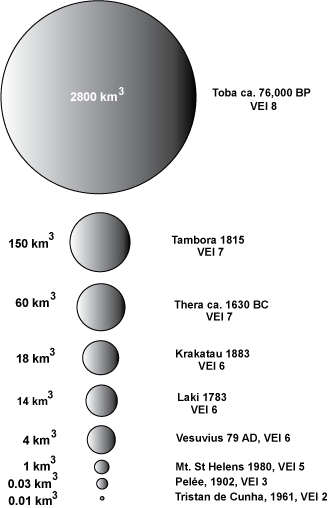
of material ejected in cubic metres.
The Island of Thera is part of the Santorini island group and is situated in the eastern Mediterranean 110 kilometres north of Crete. The Island of Thera is what remains of a large volcano that erupted more than 3,600 years ago (ca. 1600 BC). This eruption is probably one of the most severe volcanic explosions of the Holocene, the last 10,000 years, and altered the course of history of the entire Mediterranean and Europe. The explosion is categorised as a rare catastrophic super-colossal eruption with a Volcanic Explosivity Index (VEI) of 7.
Thera was not uninhabited when it erupted and sported a major urban settlement that was probably similar in size to Pompeii. The town and its population were closely linked to the Minoan civilisation that had developed on the island of Crete and flourished from approximately the 27th century BC to the 15th century BC. The Minoan culture was highly developed and they build lage towns, elaborate palaces, of which Knossos is the best known, and they were major exporters of bronze. The strategic location of Crete and their bronze production had turned the Minoans into the premier trading and political power in the Mediterranean. It was powerful enough to extract tribute from the Greeks and to establish colonies on the Greek main land. The Minoan civilisation came to an abrupt end when Thera erupted violently around 1600 BC. Earthquakes preceding the eruption must have rocked the buildings on Crete and throughout the region. The eruption caused huge tsunamis destroying coastal areas and much of the agriculture along the coast. In addition, ash layers up to 20 centimetres were deposited on Crete destroying crops and vegetation. It is also very likely that the enormous quantities of sulphur dioxide and dust thrown into the atmosphere absorbed much sunlight and depressed temperatures for several years. The combined effect of tsunamis, ash deposition and depressed temperatures surely led to harvest failure and famine. This in turn led to a collapse of Minoan society and many of the survivors fled Crete to settle on the Greek Mainland, Egypt and other parts of the eastern Mediterranean. At the same time the Mycenaean Greeks invaded the Island and replaced the Minoan rulers at Knossos. The Greeks had no written language of their own but Minoan scribes adapted their written language to accommodate the spoken language of the new Greek rulers. Minoan refugees and emigrants aided the expansion and development of the Mycenaean Greeks by disseminating their script and culture throughout the Mycenaean world. The Bronze Age eruption of Thera shifted the balance of power and development from Crete to the Greek mainland thus enabling the rise of Greek culture, values and ultimately the philosophies that have underpinned much of western civilisation.
Vesuvius and Pompeii
The eruption of Vesuvius in 79 AD is probably the best know volcanic eruption in world history. It buried the Roman towns of Pompeii and Herculaneum. In terms of size, this eruption is small in comparison to the Thera eruption 1700 years earlier. The eruption of Vesuvius only produced 4 cubic kilometres of ejecta and had a Volcanic Explosivity Index (VEI) of 6 while the eruption of Thera produced about 60 cubic kilometres of ejecta and a VEI of 7. In other words, the Thera eruption was 20 times more powerful than Vesuvius in 79 AD. Nevertheless, the results of the eruption were devastating, producing huge pyroclastic flows that swept through Pompeii, Herculaneum and surrounding areas killing most people in the process. The heavy ash falls buried Herculaneum under 20 metres of ash and Pompeii under 4 metres, preserving them perfectly for posterity. Over time, the two towns were forgotten but rediscovered in the 18th century. The real significance of Pompeii, Herculaneum and the Vesuvius eruption is that the towns offer a snapshot of Roman life in the 1st century AD, frozen at the moment it was buried on that fateful day in 79 AD. Pompeii and the Vesuvius have penetrated Western culture in many aspects through influences on architecture, literature, drama and films. Vesuvius is perhaps the best known and most depicted volcano in Western culture.

Federer, 1850.
The Middle Ages
Like any period the Middle Ages have know periods of ecological and climatic disruptions which translated in famine and epidemics. In the thousand years between 500 and 1500 there are two periods of ecological and climatic disruption that stand out. The first one occurred at the start of the period and is by many historians regarded as the end of antiquity. The second period occurred during the 14th century when climate deteriorated and disease hit the population in the form of the Great Famine and the Black Death. Let’s first turn to the end of antiquity and the start of the Middle Ages.

Between 536 and 551 AD tree ring growth was very low throughout Europe and many other parts of the world, including North America, New Zealand and China. Contemporary writers in southern Europe described what modern climate scientists call a ‘dust veil event’ which sharply reduced solar radiation reaching the earth’s surface. This depressed temperatures, disrupted weather patterns, reduced biological productivity, including food crops, and resulted in famine and social disruption during the 6th century. The consequences of the dust veil were experienced worldwide. In Britain, the period 535-555 AD produced the worst weather of the 6th century. In Mesopotamia, there were heavy snowfalls and in Arabia there was flooding followed by famine. In China, in 536, there was drought and famine and yellow dust rained down like snow. In Korea, 535 and 536 were the worst years of that century in climatic terms with massive storms and flooding, followed by drought. It has also been suggested that the occurrence of the Justinian Plague, a pandemic that affected the Byzantine Empire in the years 541-42 is linked to the climatic events five years earlier.
Although historians have sought to explain the ‘dust veil’ in terms of a comet hitting the earth no evidence for this has never been found. Only recently, with the help of earth scientists, is it becoming clear that we are dealing here with a volcanic event. Ice core analysis combined with tree ring data has shown that a severe volcanic eruption, possibly in South America, of somewhat larger magnitude than the 1815 Tambora eruption most likely caused the 536 dust veil. This catastrophic event can be regarded as the trigger that ended the classical world and the beginning of the Middle Ages. It blotted the sun out for many months and resulted directly and indirectly, in climate chaos, famine, migration, war and massive political change on all continents. The question is if this was a one off event in the past two thousand years. Historical events of the 14th century suggest that this is not the case.
Written records from the 14th century provide accounts of severe weather in the period from 1314 to 1317, which led in turn to crop failure and famine. This episode of failed harvests and its consequences is known as “The Great Famine”. Notwithstanding these ecological calamities, the population of northern Europe was at an all time high by the second quarter of the 14th century. However, the arrival of the Black Death, in Europe in 1347 pushed the European population into a century-long demographic decline and caused long-term changes in economy and society.
Until recently it is believed that the Black Death was riding on the back of expanding trade between Europe and Asia in the 13th and 14th centuries. This would have brought populations into contact that had been isolated before and were vulnerable to new disease. But new research has suggested that the causes of the Black Death are more complicated and might be related to volcanism and the resulting atmospheric upheavals.
First of all there is a parallel with the 536 event: the outbreak of a plague epidemic. With the knowledge of this volcanic event there is the possibility that something similar happened during the 14th century. In recent research, medievalist Bruce Campbell of Queens University in Belfast, compared the chronologies of prices, wages, grain harvests and the corresponding chronologies of growing conditions and climactic variations, taking into consideration dendrochronology, the Greenland and Antarctic ice cores and episodes of the Black Death. Campbell comes to the startling and tentative conclusion that both the Great Famine and the Black Death might be related to a series of large volcanic eruptions that caused climate chaos, followed by famine and disease. The mechanisms between climatic disturbance and disease are not understood at present but the evidence is tentative because of the coincidence of volcanic events, climate disruption, famine and disease.
Without the Great famine and Black Death the social and economic history of Europe would have been different. The European population was decimated by 50 per cent but the survivors experienced an increase of living standards and wages unparalleled until the Industrial Period. So, perhaps volcanoes triggered the Renaissance and the emergence of modern Europe.
Laki eruption 1783
Iceland is one of the most volcanic places on the planet with over 160 volcanoes and experiences a major volcanic eruption almost every decade. The close proximity to Europe and the prevailing western winds makes it possible for volcanic ash and gasses to reach the continent. One of the most notable and best documented events has been the eruption of the Laki Volcano in 1783. The eruption started on 8 June and lasted for eight months producing 15 cubic kilometres of lava.
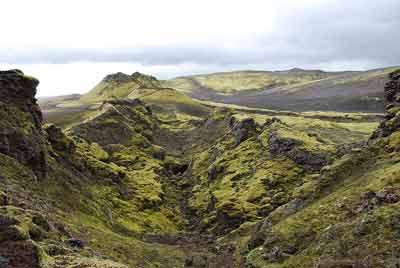
Of key importance to the events examined here is the fact that in 1783, volcanic gases emitted by the eruption in Iceland were transported to Europe by the prevailing winds, where they caused considerable respiratory distress to susceptible people and damage to crops, trees and fish. Very detailed descriptions of severe acid damage to vegetation, insects, people and property have been left by a number of scientists, of which the recently rediscovered records of two Dutchmen, Brugmans (1787) and Van Swinden (1786), reveal the impacts of the Laki eruption during the summer of 1783. In mainland Europe the volcanic gases were described as a ‘dry fog’, an ‘acid fog’ or ‘sulphurous fog’. For example, Brugmans (1787) noted:
On many days after the 24th June, in both the town of Groningen and countryside there was a strong, persistent fog…the fog was very dense and accompanied by a very strong smell of sulphur.., many people in the open air experienced an uncomfortable pressure, headaches and experienced a difficulty breathing….
This account is typical of many that were written at the time. Many crops withered because of the acid deposition but there are no reports on the continent of famine. This is different in northern Scotland where the population was facing hardship because of a harvest failure in 1782, a year before the eruption. The food situation was already poor when acid deposition and ash from the Laki eruption rained down and destroyed crops. Contemporary reports from northern Scotland suggest that many farmers and their families abandoned their farms and ‘were forced to beg or perish’. This shows that the effects of the Laki eruption were not the direct cause for famine in Northern Scotland but the last straw which triggered the crisis.
The 2010 eruption of the Eyjafjallajökull only caused disruption of air traffic but did not have much of an impact on the ground of continental Europe in terms of disrupted weather patterns or acid and ash deposition. However, if the eruption had continued and spread to the nearby Ketla volcano and atmospheric conditions had changed a “dry fog” would probably develop over Northwest Europe. Will such an event redirect historical trends in Europe? That is unlikely in the light of the events of 1783, although one has to be careful and considered: on a local level it might have had some impacts.
Perhaps the 1873 Laki eruption contributed to a more concerted scientific effort to understand climate and weather in Europe. More serious were the consequences for the Icelandic population. Iceland depended heavily on sheep and cattle herding as a source of food production besides some production of grain and other crops. Acid deposition stunted the growth of grass affecting fodder production to feed animals during the winter months. In addition fluorine deposition poisoned streams and grass killing around 80 percent of sheep and half of all cattle. As a result an estimated 20-25 per cent of the population died in the famine and fluorine poisoning after the fissure eruptions ceased.
Further to the south in Northern Scotland there are indications that the impact of the Laki eruption might have speeded up the Highland Clearances. However, Dodgshon et al. remind us in a paper assessing the influence of Icelandic volcanic eruptions in the Scottish Highlands that volcanic eruptions are inadequate to explain social and ecological changes.5 This reminds us that climatic and environmental disasters are most of the time “funnels”, and not direct causes of long term historical developments. They reinforce already existing historical patterns such as migration or political instability, overexploitation or the development of new economic and social regimes.
This post was originally published Eh-Resources.

